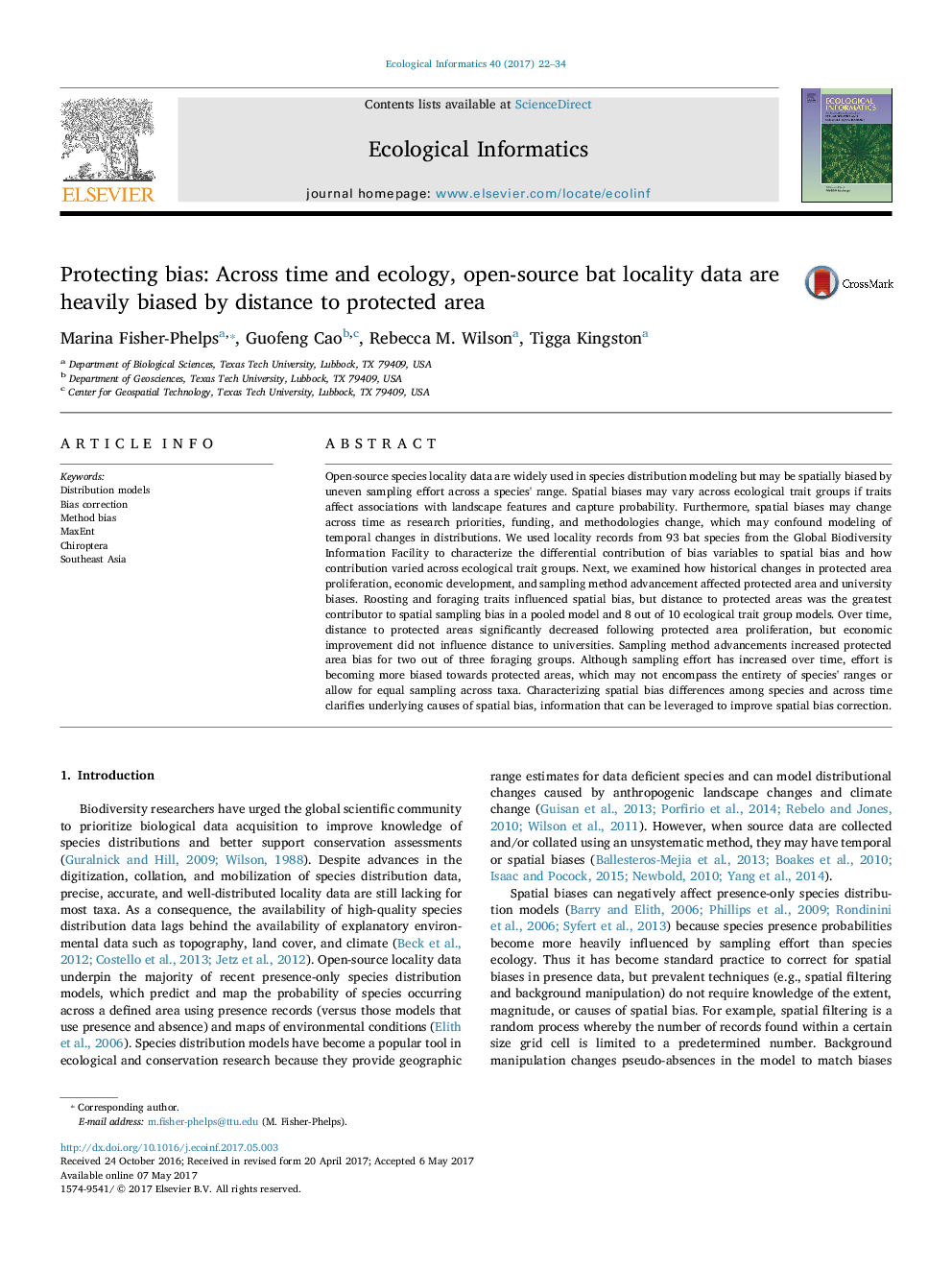| کد مقاله | کد نشریه | سال انتشار | مقاله انگلیسی | نسخه تمام متن |
|---|---|---|---|---|
| 5741896 | 1617194 | 2017 | 13 صفحه PDF | دانلود رایگان |
- Southeast Asian bat sampling effort exhibits regional spatial variability.
- Distance to protected area contributes the most to spatial sampling bias.
- Contribution of spatial features to bias varies most across foraging groups.
- Sampling distance to protected area decreases following protected area proliferation.
- Advances in capture methods increase protected area bias for some but not all species.
Open-source species locality data are widely used in species distribution modeling but may be spatially biased by uneven sampling effort across a species' range. Spatial biases may vary across ecological trait groups if traits affect associations with landscape features and capture probability. Furthermore, spatial biases may change across time as research priorities, funding, and methodologies change, which may confound modeling of temporal changes in distributions. We used locality records from 93 bat species from the Global Biodiversity Information Facility to characterize the differential contribution of bias variables to spatial bias and how contribution varied across ecological trait groups. Next, we examined how historical changes in protected area proliferation, economic development, and sampling method advancement affected protected area and university biases. Roosting and foraging traits influenced spatial bias, but distance to protected areas was the greatest contributor to spatial sampling bias in a pooled model and 8 out of 10 ecological trait group models. Over time, distance to protected areas significantly decreased following protected area proliferation, but economic improvement did not influence distance to universities. Sampling method advancements increased protected area bias for two out of three foraging groups. Although sampling effort has increased over time, effort is becoming more biased towards protected areas, which may not encompass the entirety of species' ranges or allow for equal sampling across taxa. Characterizing spatial bias differences among species and across time clarifies underlying causes of spatial bias, information that can be leveraged to improve spatial bias correction.
Journal: Ecological Informatics - Volume 40, July 2017, Pages 22-34
